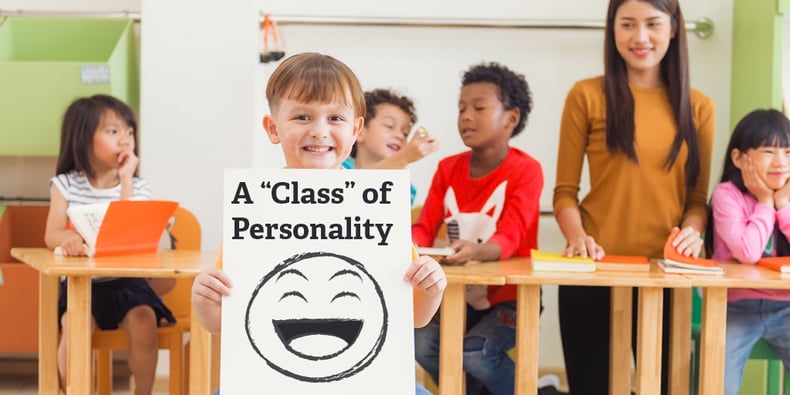
Teachers who have taught for a few years know that every individual class takes on its own personality. Hopefully it is not a clash of personality, but a class of personality. Each of the individuals in the room add to create one overall classroom “personality.” Even one or two new students moving into or leaving a classroom can change the entire culture and dynamic of the room.
Sorting Your Students
Early on in the year, it’s important to make sure you know not only how your students learn, how they think, and what they like, but also about their personality. This information can be obtained through various methods. There are different types of personality tests available for consumption—some are free, some cost, some are tested on paper, and some are available online, but all essentially do the same thing. These tests and surveys sort students and their personalities into different categories (usually four or five): Whether a student is introverted or extroverted, whether they are a right-brain thinker or a left-brain thinker, and if they like to work alone or in groups. All of this information is part of the personality they bring to the classroom.
Here are some starting points for resources if you'd like to figure out some of the personality types of the students in your class:
- This site has a number of printable personality tests. Depending on the age level you teach, some will be more appropriate than others. A few of them have very high-level vocabulary that elementary students wouldn’t be able to comprehend.
- The Myers–Briggs Type Indicator is very well known and could be useful to share with other teachers. If teachers share students, this test could be beneficial so others could use the results in their classrooms, too.
The Results Are in—What Now?
So what is a teacher to do with this personality information once they have obtained it? Truthfully, I don't know that I would do too much at first, other than process and reflect on the results. As the school year goes on, you will notice that different personality types clash while some personality types are drawn toward one another. Hopefully, what will happen is both a comfort with those who have similar personality types while at the same time developing an ability to work with different personality types. By putting a name to a personality, it makes it so that conflict between students is not a personal situation, but a personality situation. “I don't dislike this person, but this part of their personality is something that I have trouble working with.”
This can also help with conflict management and conflict resolution in the classroom. This is a life skill that every student will need to develop—we all have different people at our workplace with different personalities that don't jive with our own. Navigating this and reflecting on the root of any conflict is important to both a healthy classroom and workplace.
The other good use for this information is to consider different career fields and how different personalities best fit with these. For example, a person who is highly introverted, highly individual, and highly private may not make the best kindergarten teacher. Certain jobs lend themselves to being an extravert, being in front of people, or working in a team. These types of discussions probably only need to take place with older students, but even with younger students, it helps to get them thinking about what they're good at and what they potentially may want to do in the future.
Another interesting thing to do with a personality test would be to have all the members of your department or your team take the test. This can have the same effect as it does in the classroom—each person can better understand how to work with one another. Sometimes conflicts on teams are, at their root, a matter of personality conflict. By using a test to name the characteristics of the personality, it desensitizes the issue and makes it more objective. For example, the team can see it as a personality issue instead of one person being “right” and another “wrong.” The truth of the matter is that different personalities make teams stronger, as long as they see this as a strength and not as a personality clash.
Hopefully by making some quick and easy surveys or tests, providing them to your students early in the year, and reflecting on the data, teachers and classrooms can work better together and provide more support for one another. And if teams are ready to communicate and grow together, they can check their personalities and reflect together on the results.
Looking for more teaching tips and tricks? Be sure to subscribe to the Mimio Educator blog today!





